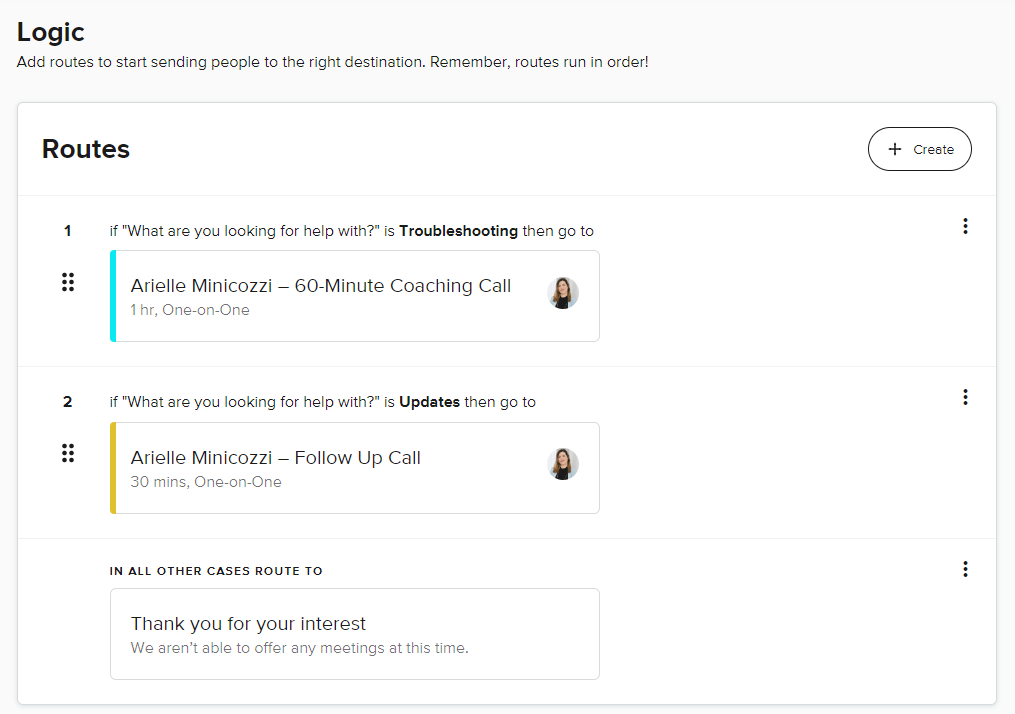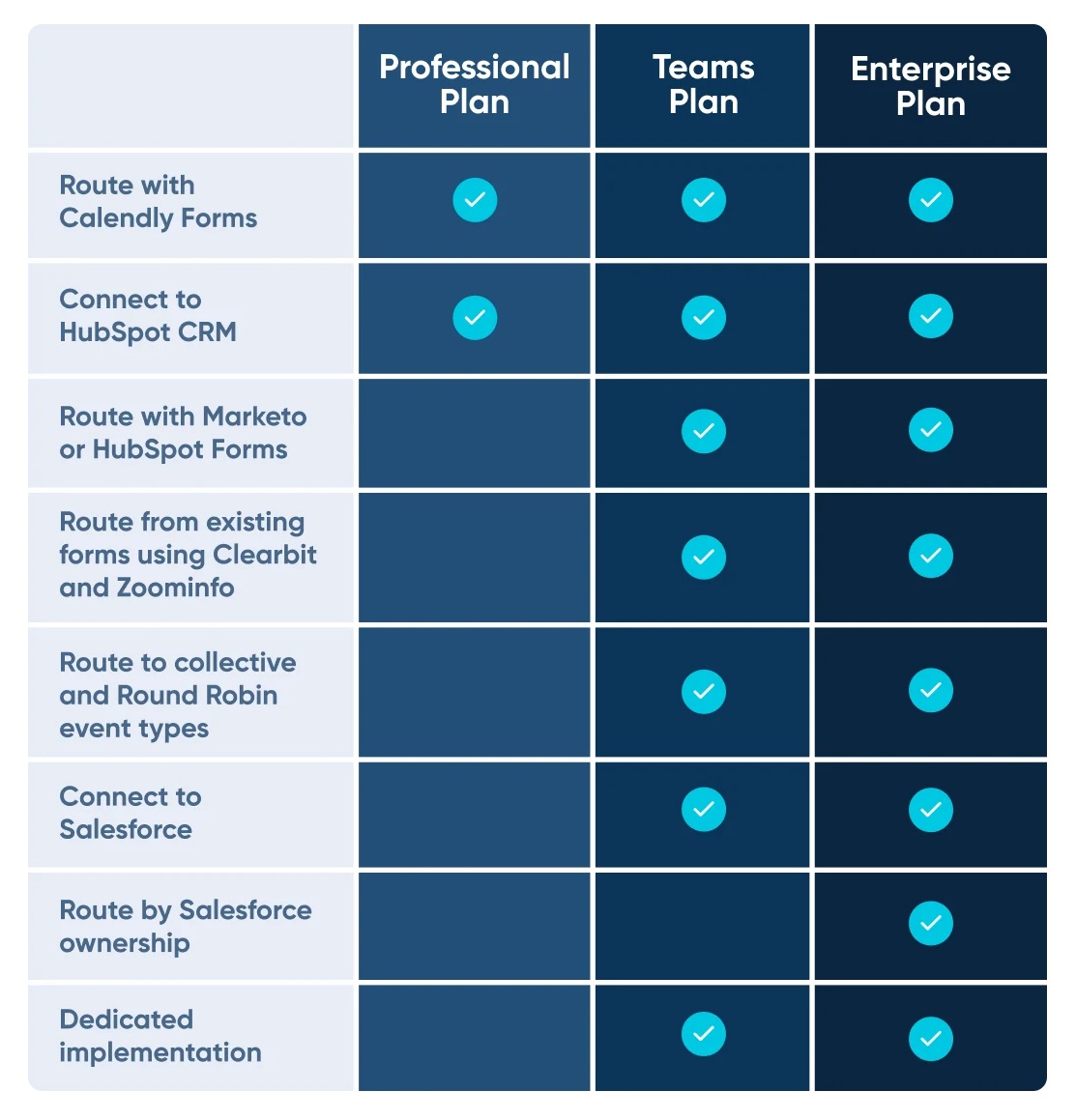Calendly Routing: Expanded!
Apr 26, 2023
Introduction
As you might remember, Calendly introduced Routing Forms in May of 2022 - a new way to filter and pre-qualify leads before actually meeting with them. Now less than a year later, they've expanded Routing Forms to "Calendly Routing", which allows you to note only route leads through Calendly forms, but also to work in conjunction with certain integrated CRMs such as Salesforce and HubSpot! These new integrations and features allow clients to seamlessly get in touch with their contact owner, ensure only the right prospects are scheduling with the right team members, and collect the proper data through form submissions.
Let's take a bit of a deeper dive into each step of the Calendly Routing process!
Qualifying Leads via Forms
If you're familiar with Calendly Routing Forms, you already know that they allow you to send leads to the proper resource or booking link based on how they answer the questions on your form. And while you can absolutely still use Calendly's routing forms, you can now also import forms from HubSpot or Marketo and route leads without having to create forms from scratch!
HubSpot and Marketo forms that use show/hide field responses to qualify leads can also be set up to route leads to the right booking pages. In addition, you can also embed these forms on your website to start the lead qualification process right when leads travel to your website.
Automatically Routing Leads & Clients
After setting up your routing form, the next thing you'll need to do is set the logic for how you want leads to proceed based on how they fill out the form.
For instance, in the screenshot below, I've set up three potential routes for the test routing form I created. The first will direct leads who need help troubleshooting a specific issue to book a coaching call. The second will direct clients or leads needing general updates to book a follow up call to learn more about their needs. Finally, the third route is a "catch-all" option that displays a "thank you for your interest" message if they don't fit into one of the first two routes.

This is a very simplistic routing setup, which may be all some users need, but users also have the ability to add dual-part conditions if they so choose. If you want one of multiple options to direct to a certain event type or resource, you can use the "or" button to add a second response to the route. If you only want a certain set of responses to direct the lead/client to a specific booking link, you can use the "and" button to make additional responses required as part of the route.

On top of the existing routing logic, you can also integrate certain CRMs like Salesforce or HubSpot to link an existing client to their contact owner. That way, your client doesn't accidentally schedule with someone who knows little-to-nothing about their situation and makes the most of everyone's time.
Note: Not all Calendly paid plans will have access to this feature. Check out the image below, courtesy of Calendly, to see which plans contain which Calendly routing features:

Different Types of Routes
Per Calendly's overview of their new routing feature, they recommend setting up three types of routes: booking routes, screening routes, and fallback routes. So what exactly are these routes, and how might they be of benefit to you?
- Booking Routes - This is the optimal route that you'll want clients/leads to take assuming they're a good fit for an engagement with you. For example, routes 1 and 2 in the previous section are both booking leads because they direct leads who meet those conditions to book calls. These types of routes can be set up for existing clients to meet with someone they're familiar with, or they can be set up to direct new leads to the right person.
- Screening Routes - Screening routes act as the opposite to booking routes. These routes are used to direct leads that don't meet the parameters to work with you. Maybe a lead is best suited for one of your referral partners based on the answers they gave in their form submission. You could use a screening route to redirect that lead to someone who will be of more benefit to their current situation.
- Fallback Routes - Fallback routes are similar to screening routes in the sense that they are reserved for leads who don't fit the parameters to work with you, but there might be more to their situation that you need to know in order to make a final judgement call. You can use this type of route to ask for more information to clarify their situation, or if they're not quite there yet, you can display a message detailing what they need to do in order to become a good fit to work with you.
Setting up these three types of routes guarantees that every client or lead who submits a routing form will either be directed to the right place, or be given the right information for their needs.
Conclusion
With its new updates, Calendly Routing allows users to take their lead qualifying and client routing processes to the next level, without the need for any manual input once it's set up! Gone are the days of rescheduling leads and clients who booked with the wrong team member, and perhaps more importantly, taking time out of your or your team members' days to meet with clients who just aren't a good fit. With Calendly Routing on your side, you can breathe a sigh of relief, and stop having to expect the unexpected when it comes to scheduling.
If you need help setting up a Calendly Routing system, or setting up pieces of Calendly in general, click this link to book an intro call with us! Not only is Calendly is one of our favorite scheduling systems, but we've helped a handful of our own clients utilize Calendly in a way that makes sense for them and saves them both time and energy!
Also, be sure to sign up for our newsletter (right side of the screen) to have next month's edition of the Sphynx Automation blog series delivered directly to your email!
This blog is written by the Sphynx Automation team to help DIYers use web-based apps.
Not a DIYer? Not a problem, click the button below to chat with us.

